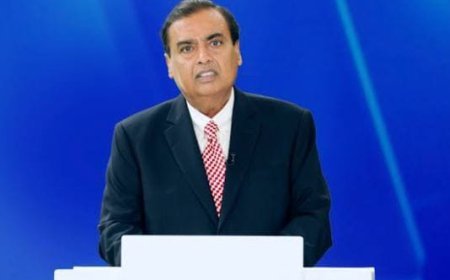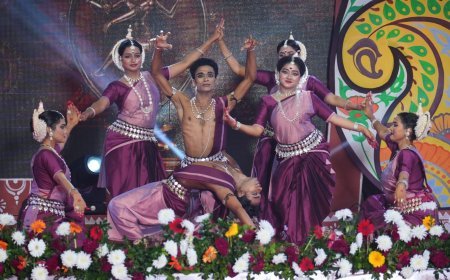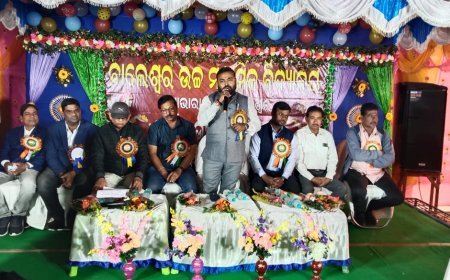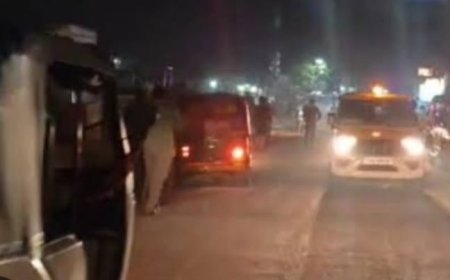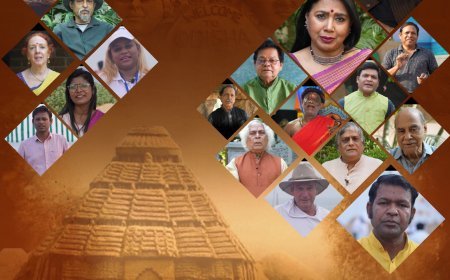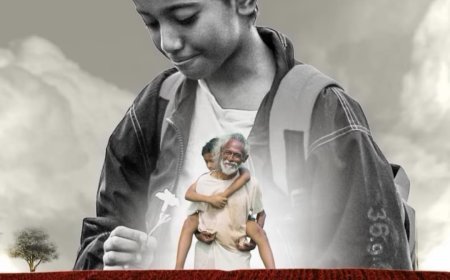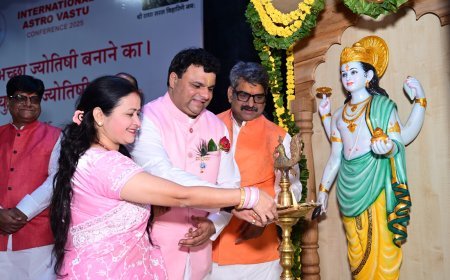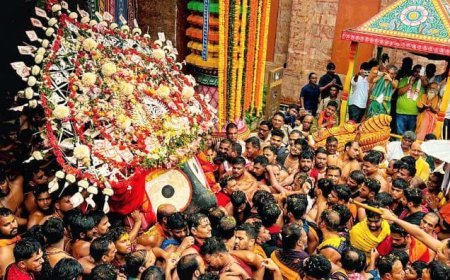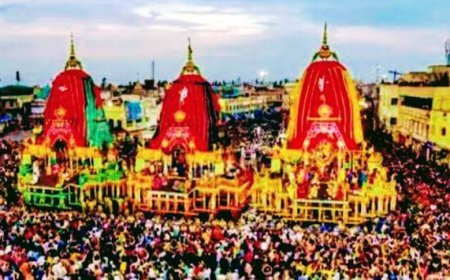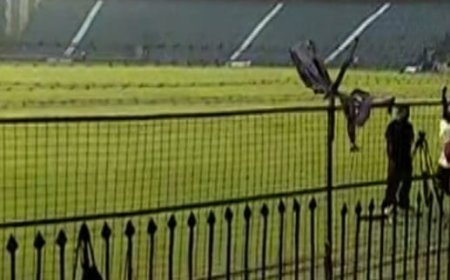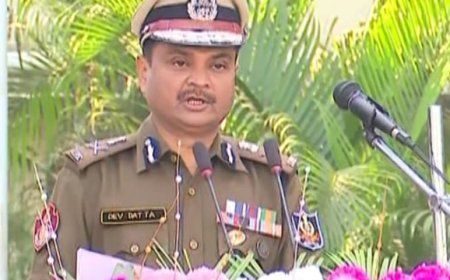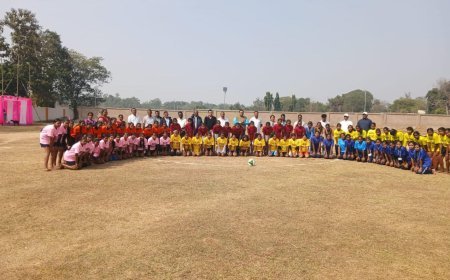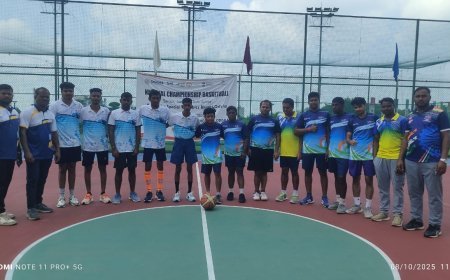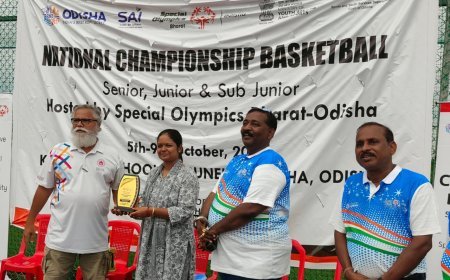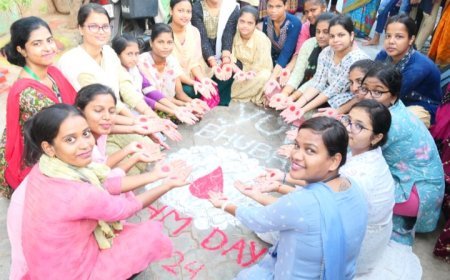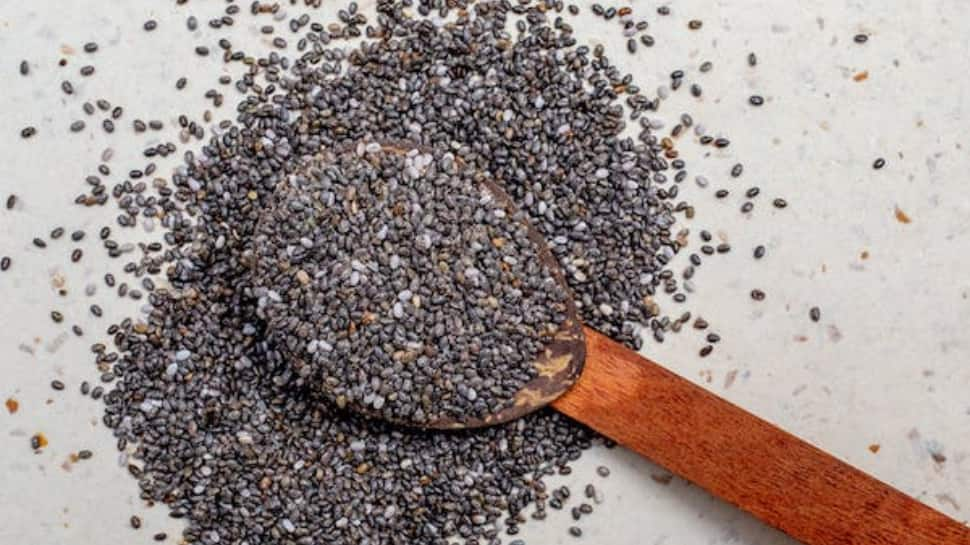Poshan Maah: Bringing Malnutrition to Centre Stage
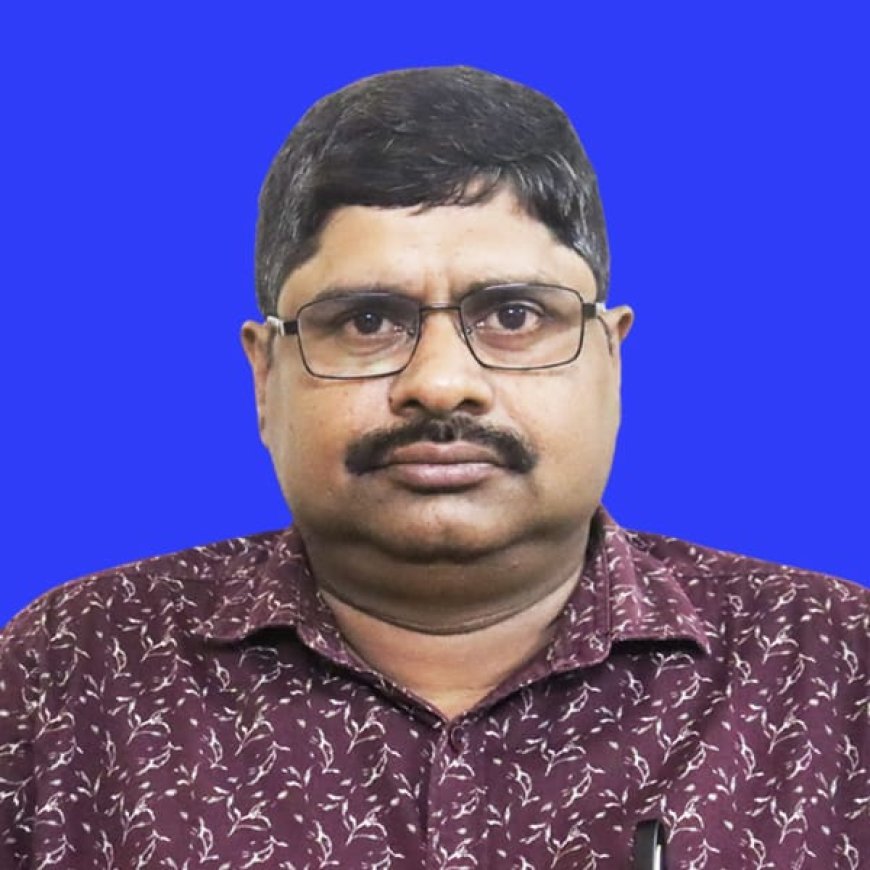
Bhubaneswar (25/09/2024): Article By Dolagobinda Panda,Chandrashekharpur, Bhubaneswar: Poshan Maah is being celebrated from September 1 to 30, 2024 with the slogan " Suposhit Kishori Surakshit Nari".The objective of Poshan Maah is to ensure community mobilization and enhance people's participation in addressing malnutrition amongst young children, and women and also to ensure health and nutrition for everyone.
Various activities planned by Government of India in collaboration with State Governments are a plantation drive, distribution of nutritional supplements, community outreach programs, exhibitions, and education sessions on nutrition.
Malnutrition means deficiency, excess, or imbalances of a wide range of nutrients resulting in measurable adverse effects on body composition, function, and health outcomes.
Malnutrition may arise due to reduced dietary intake and reduced absorption of nutrients due to specific health conditions.
Obesity is also a form of malnutrition mostly observed due to lack of exercise and changing lifestyles. Malnutrition in all its forms like wasting, stunting, being underweight, inadequate vitamins and minerals intake, and being overweight results in diet-related noncommunicable diseases as well as making the affected person more susceptible to communicable diseases.As per WHO report in 2022 nearly half of global deaths among children under 5 years of age are linked to undernutrition Malnutrition is better understood when we interlink dimensions contributing to malnutrition.
Those dimensions are choices of food, food intake, food absorption, affordability, cultural taboos around types of food allowed for consumption in the community, gender biases, health conditions, and finally overall well-being of people concerning their education, awareness on nutrition and lifestyles etc.
Toggle navigation
Latest News
Man dies after being run over by Mo BusMinor girl gang raped in SundargarhOdisha Health Minister urges nursing staff to withdraw their strikeMusic melody programmes to be allowed till 10 pm during Durga PujaLow pressure forms over Bay of BengalOdisha to conduct parent-teacher meetings on September 30Adulterated milk processing unit busted in CuttackBD calls off six-hour Bhubaneswar bandh after Odisha government orders judicial probe into Bharatpur caseYoung man dies after being run over by trainBJD to observe six-hour Bhubaneswar bandh on September 24SUV hits roadside tree, five criticalLow pressure likely to form over Bay of Bengal in 24 hours; Rainfall in Odisha till September 26PM-JUGA launched in OdishaAIIMS Bhubaneswar Celebrates 12th Annual Day with innovation and compassionFive crore trees to be planted in Odisha: CMTen injured as bus hits unknown vehicleSupreme Court's YouTube channel taken down after hackingMaoist posters found in SundargarhJawans neutralize IED in MalkangiriFire breaks out at SBI branch in Keonjhar
OdishaRay
OdishaRay
Home Trending Mobile
Poshan Maah: Bringing Malnutrition to Centre Stage
OdishaRay 9:25:38 PM
Bhubaneswar (25/09/2024): Article By Dolagobinda Panda,Chandrashekharpur, Bhubaneswar: Poshan Maah is being celebrated from September 1 to 30, 2024 with the slogan " Suposhit Kishori Surakshit Nari".The objective of Poshan Maah is to ensure community mobilization and enhance people's participation in addressing malnutrition amongst young children, and women and also to ensure health and nutrition for everyone.
Various activities planned by Government of India in collaboration with State Governments are a plantation drive, distribution of nutritional supplements, community outreach programs, exhibitions, and education sessions on nutrition.
Malnutrition means deficiency, excess, or imbalances of a wide range of nutrients resulting in measurable adverse effects on body composition, function, and health outcomes.
Malnutrition may arise due to reduced dietary intake and reduced absorption of nutrients due to specific health conditions.
Obesity is also a form of malnutrition mostly observed due to lack of exercise and changing lifestyles. Malnutrition in all its forms like wasting, stunting, being underweight, inadequate vitamins and minerals intake, and being overweight results in diet-related noncommunicable diseases as well as making the affected person more susceptible to communicable diseases.As per WHO report in 2022 nearly half of global deaths among children under 5 years of age are linked to undernutrition Malnutrition is better understood when we interlink dimensions contributing to malnutrition.
Those dimensions are choices of food, food intake, food absorption, affordability, cultural taboos around types of food allowed for consumption in the community, gender biases, health conditions, and finally overall well-being of people concerning their education, awareness on nutrition and lifestyles etc.
Now let's discuss about malnutrition status of Odisha.
Malnutrition is interlinked with multidimensional poverty.
Odisha Economic Survey 2023-24 highlighted that as per the multidimensional poverty headcount, 2019-21 period 62.6 lakh people were lifted out of multidimensional poverty in Odisha between 2015-16 and 2019-21and at the same time 15.7% of the state population were multidimensional poor where the corresponding figure for all India is 14.96%.
There are twelve factors considered by NITI Ayog while calculating the Multidimensional Poverty Index(MPl).
These factors are nutrition, cooking fuel, child and adolescent mortality, maternal health, years of schooling, school attendance, sanitation, drinking water, electricity, housing, assets, bank accounts, etc.
Among these dimensions of MPI extent of deprivation was high in adequate housing(40.7%), nutritional adequacy (30.8%), safe sanitation facilities (39.8%), Safe drinking water (13.5%), antenatal care (14.8%), years of schooling (13.4%).
Except for housing, all other dimensions mentioned here are significant contributing factors to the current status of malnutrition.
Within multi-dimensional poverty dimensions, the intensity of malnutrition is more, also associated with factors like sanitation.
Hence as per our conventional understanding malnutrition is not only limited to health and nutrition issue.
While Women and Child Development, Health & Family Welfare, Mission Shakti, Panchayati Raj & Drinking Water department, etc implementing programs and schemes to reduce malnutrition it seems there are parallel implementation lines at the village level, also inadequate governance spaces, multiple monitoring committees and missing out of vulnerable people.
Irrespective of so many flagship schemes by Departments how does the current level of malnutrition there? Normally we won't believe the alarming rate of Maternal Mortality Rate(MMR) which is 119 for Odisha is partly linked to anemia, poor nutrition, inadequate pre-natal and postpartum care and early pregnancy, etc.
For instance, 61.8% of pregnant women in the age group of 15-49 years are anemic in Odisha.
A state like Kerala has limited MMR to 19.
Can’t we compete with Kerala within coming five years? Let's explore how can we plan and integrate the plan and converge better for required nutritional outcomes.
There are provisions for participatory planning, convergence, and plan implementation at the grassroots level.
By the 73rd amendment, the 3-tier Panchayatiraj system is in place.
There is a provision to transfer 29 functions to Panchayati Raj Institutions(PRIs) by devolution of funds, functions, and functionaries.
However adequate devolution and resource allocation have not been done in our state except for functions most probably under Panchayati Raj & Drinking Water department .
However, there are advisories to depts to consult Gram Panchayats for their plan implementation.
Let's reflect that all departments work for the public good, especially to save a life.
Our state is committed to achieving overall excellence by 2036, Govt of India aspires to be Shresta Bharat by 2047 and there is a global commitment to achieve Sustainable Development Goals(SDGs) by 2030.
At any cost, the current level of malnutrition has to be brought to zero level.
For localization of SDGs Ministry of Panchayati Raj(MoPR), Government of India has provided guidelines for preparing thematic plans by Gram Panchayats involving line departments, Community based organizations(CBOs) and Civil Society Organizations(CSOs) working in the Gram Panchayats (GP).
The GPs are advised to plan for 9 themes on saturation approach and healthy village is one theme. Gram Panchayats are supposed to play a central role in the healthy village theme which covers primarily checking malnutrition through effective planning, monitoring, and governance of health, nutrition, livelihoods, education, women empowerment, water, sanitation, and production & consumption of nutritious and safe food at Village and Gram Panchayat level.
One of the objectives of a healthy village is to ensure a healthy life and well-being of all people in the village. Gram Panchayats prepare their Gram Panchayat Development Plans(GPDP) every year.Gram Panchayats have the mandate to form a Gram Development Planning Team(GPPFT) for planning and issue notifications for palli sabha and gram sabha so that multi-thematic plans including healthy village plans are prepared and approved by Gram Panchayats.
Most of the plans are to be covered under flagship health and nutrition schemes where GPs can prioritize some of the activities under Central Finance Commission (CFC) and State Finance Commission(SFC) funds which is Rs 25-30 lakh on an average per GP.
In addition to this fund, GPs can explore DMF, CSR, and Tribal Subplan funds as well as other philanthropies ready to extend grant support.
While we talk about nutrition we have to think about safe food.
Most of the food we are consuming today is grown with chemical fertilizers and pesticides.
While chemical fertilizers kill earthworms and helpful insects and microbes, pesticide residues enter our body and magnify over some time causing cancer and other harmful diseases.
Now aware citizens and farmers need to explore other alternative farming practices.
For thousands of years, our tribal farmers have continued natural farming, using locally available seeds, oilcakes, and composts to grow crops.
Both Central and State governments also promote natural and organic farming.
Odisha Livelihoods Mission( OLM) under the Department of Mission Shakti supported by NRLM have started working on natural farming across the state.
GPs can support this initiatives by creating awareness on natural farming, building consensus among farmers for crop selection, restricting the use of lethal pesticides and taking up land development, farm pond vermicompost, and plantation activities under MGNREGS.
GPs can plan various awareness activities to check the increasing trend of tobacco and alcohol use in villages which are adversely affecting health.
Along with safe food production through natural farming, GPs can plan for 100 % coverage of vaccination and enrolment of all children in Anganwadi and schools, plan activities to include left-out families under PDs, pension, Takehome Ration(THR) from Anganwadi and women developing nutri-garden and Village Health and Nutrition Day( VHND) observed in all villages.
They can also take up many other activities under health, nutrition, and livelihoods programs on a saturation approach.
Overall all GPs may develop a meahcnism to track the progress of plan implementation and extend support to line departments especially for effective participation of people in programmes and their governance.
The motto of the Localization of SDG is Leaving No One Behind(LNOB) and Whole of Government ensured by coordination among government departments and involvement of SHG federations and other Civil Society organizations in the spirit of Whole of Society so that SDG goals are achieved at village including healthy village objective.
I believe effective village and GP-level governance will be helpful for all villages to be healthy village by 2036 for our resource surplus Odisha.






